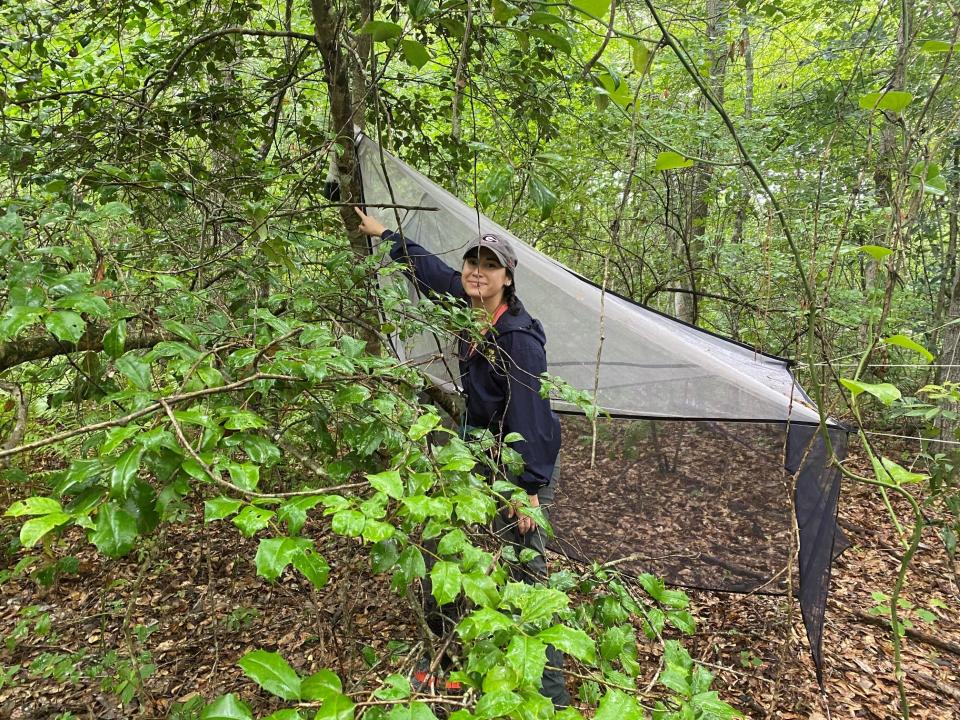Who invented the best insect trap? | ECOVIEWS
- Oops!Something went wrong.Please try again later.
- Oops!Something went wrong.Please try again later.
Ben Franklin and Mark Twain get credit for a lot of quips and quotes, some of which they actually said. "Build a better mousetrap and the world will beat a path to your door” is not one of them.
Though Ralph Waldo Emerson is often given credit for that adage, no one is positive who first said it. Regardless of the author, lots of people have taken the statement to heart.
According to John H. Lienhard, professor emeritus at the University of Houston, the U.S. Patent and Trademark Office has issued more than 4,400 patents for mousetraps, an average of more than 30 per year since Emerson’s death in 1882.
More: Antiques and biodiversity offer relief from 'spousal entrapment' | ECOVIEWS
Humans have been devising ways to catch animals for their own purposes for millennia. How far back in time the earliest hunter-gatherers used snares and deadfalls is unknown. But we know pitfall traps were used to capture deer during the Stone Age.
A publication of the Archaeological Institute of America reported fish traps in Norway estimated to be 7,000 years old. Most people are familiar with lobster pots. Designed to lure in one of the ocean’s most prized edible invertebrates, they have been used in Massachusetts for more than two centuries.
Along the eastern Atlantic and Gulf Coasts, large wire mesh boxes known as crab traps/pots capture millions of blue crabs each year. The standard trap design is a simple one in which cylinders the diameter of the largest crabs lead into the center of the box. A crab enters and stays trapped until the trap is checked.

Most crab trapping is a commercial enterprise, but recreational crab trapping is prevalent in many coastal communities and resorts. One unfortunate aspect of the standard design of a crab trap is that the beautiful diamondback terrapins that inhabit the coastal estuaries from Cape Cod to Corpus Christi, Texas, can also enter a trap if it does not have a turtle excluder device on it. Terrapins cannot breathe underwater and will die if the person setting the trap does not return in time.
Because of their starring role as pests, insects have been the focal point of a variety of capture techniques.
Cockroach catchers are promoted commercially to eliminate those unwelcome houseguests. In the eastern states, the Japanese beetle is an invasive species that feeds on grass roots and may do serious damage to golf courses, pastures and lawns. Traps to catch the beetles can be purchased at garden centers, but according to the U.S. Department of Agriculture, “under favorable conditions, a trap will capture only about 75% of the beetles that approach it.” "Under favorable conditions" — not a compelling sales pitch for pest control. Sounds like someone needs to invent a better Japanese beetle trap.
But people don't catch animals just for food or because they are a pests. Scientists, including ecologists, have also developed techniques for catching animals. After all, to fully study some animals, you first have to catch them.
Sara Rivera, a graduate student from Western Carolina University who conducts research on lightning bugs, recently asked about setting up a Malaise trap in a swampy area at Salleyland where we have seen numerous species. The trap looks like a tent made of lightweight fabric with an opening on one side. As flying insects enter the opening, they are directed upward by the black mesh and fall into a jar of alcohol hanging on the outside.
The trap, which some entomologists consider “the world's most commonly used type of trap for sampling winged insects,” is named for a French scientist, René Malaise. He published a scientific paper in 1934 with a description of the design.
Insects and other animals have an endless array of strategies to avoid becoming prey to predators, which have their own assortment of tactics to capture them. Innovative scientists have joined the arms race by devising effective capture techniques of their own.

Whit Gibbons is professor of zoology and senior biologist at the University of Georgia’s Savannah River Ecology Laboratory. If you have an environmental question or comment, email ecoviews@gmail.com.
This article originally appeared on The Tuscaloosa News: Who invented the best insect trap? | ECOVIEWS

